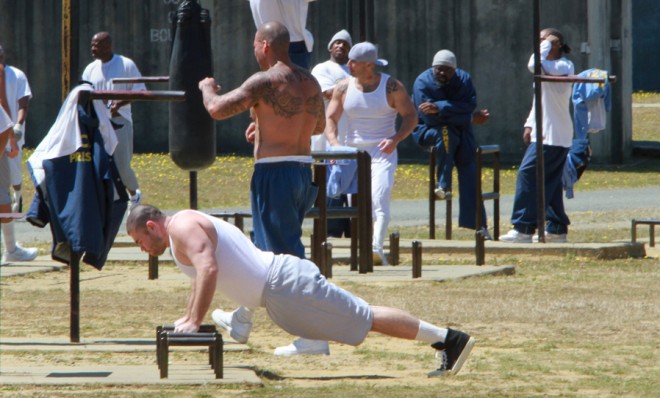Why 29,000 inmates in California are on hunger strike
The protest has extended to two-thirds of the Golden State's prisons

How bad is the hunger strike in California? Nearly 29,000 inmates are refusing to eat, with the protest extending across two-thirds of all California prisons.
At the heart of the four-day-old protest is the issue of long-term solitary confinement. California keeps nearly 5,000 inmates locked up in Security Housing Units, or SHUs.
SHU cells are small and often windowless, and prisoners can be kept there alone for more than 22 hours a day, with the remaining time spent in tiny concrete yards. Inmates can be confined in them indefinitely on charges of committing a crime behind bars or being associated with a prison gang.
The Week
Escape your echo chamber. Get the facts behind the news, plus analysis from multiple perspectives.

Sign up for The Week's Free Newsletters
From our morning news briefing to a weekly Good News Newsletter, get the best of The Week delivered directly to your inbox.
From our morning news briefing to a weekly Good News Newsletter, get the best of The Week delivered directly to your inbox.
Mother Jones' Shane Bauer, who compared SHUs unfavorably to the Iranian prison he was kept in for 26 months, described the process of being sent to one:
In California, an inmate facing the worst punishment our penal system has to offer short of death can't even have a lawyer in the room. He can't gather or present evidence in his defense. He can't call witnesses. Much of the evidence — anything provided by informants — is confidential and thus impossible to refute.
None of the gang validation proceedings, from the initial investigation to the final sentencing, have any judicial oversight. They are all internal. Other than the inmate, there is only one person present — the gang investigator — and he serves as judge, jury, and prosecutor. [Mother Jones]
SHU inmates aren't allowed to work, attend religious services or drug treatment programs, receive phone calls, play with cards, or have a clock. It was only after three previous hunger strikes — the last happening in 2011 — that they were allowed calendars and photographs. Some have been kept in solitary confinement for decades.
The ACLU and Physicians for Human Rights both consider SHU confinement torture. California, however, has defended the practice, saying that it technically isn't solitary confinement because prisoners have television and interact with the guards when they slip food through their doors.
Now, the state is facing its largest hunger strike ever, involving three times more prisoners than any previous hunger strike. What do the inmates want? A five-year limit on SHU stays, better living conditions, and federal oversight on any agreement to end the strike, according to the Los Angeles Times.
A free daily email with the biggest news stories of the day – and the best features from TheWeek.com
"It's fundamentally light years different than what happened in 2011 with the first round of strikes. There is so much more support this time," Denise Mewbourne of Legal Services for Prisoners with Children told U.S. News & World Report. "People are saying: 'I'm willing to die,' because the conditions they are living in are so bad."
Keith Wagstaff is a staff writer at TheWeek.com covering politics and current events. He has previously written for such publications as TIME, Details, VICE, and the Village Voice.
-
 A lemon-shaped exoplanet is squeezing what we know about planet formation
A lemon-shaped exoplanet is squeezing what we know about planet formationUnder the radar It may be made from a former star
-
 Political cartoons for January 4
Political cartoons for January 4Cartoons Sunday's political cartoons include a resolution to learn a new language, and new names in Hades and on battleships
-
 The ultimate films of 2025 by genre
The ultimate films of 2025 by genreThe Week Recommends From comedies to thrillers, documentaries to animations, 2025 featured some unforgettable film moments